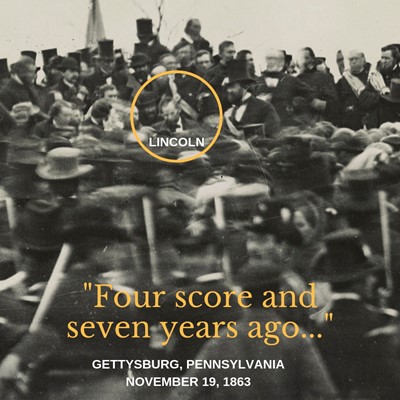
Plenty of presentations don't require you to work from a word-for-word text. Yet, a script can be a great help for a speaker.
Then why do so many presenters shy away from scripts? The bulk of the reasons we hear circle back to a common concern: They fear reading will disconnect them from the audience and the message.
One source of that disconnect is the challenge of making eye contact when your eyes are going down to the page again and again.
It is possible to work from a script AND make strong eye contact with audiences. As with so many things about public speaking and presenting, success requires the use of a few techniques and a bit of practice.
Simple technique, big difference
Perhaps you've seen a speaker open a talk and it goes something like this:
[Eyes up] Hello, thanks for having me today. My name is…
[Eyes down] ….reads their name as if they need the script to
remind them.
What just happened? Does the speaker really not know their own name?
Most likely, that's not the cause of the glance down. No, the speaker is concerned with finding the next line, worried about losing their place.
Ideally, we hold our eye contact with the audience through the important words in the phrase instead of cheating our eyes down to the text - whether those words are our name, the last words of a sentence, or key words we want to emphasize.
Try it with a colleague as your audience and you'll both see the difference right away: Force yourself to hold eye contact as you finish the words or thought. Make it your goal to connect with the audience through the last syllable.
Then, when you do break eye contact to grab the next line, your pause will feel right and the break in eye contact will feel natural.
Formatting your script to help
In order to hold eye contact consistently through an entire speech, a speaker benefits by formatting their text on the page so the next line is easy to find.
We suggest:
- Using 14 point or larger font size
- Breaking lines (hitting return) so that lines break where it's natural for you to look down and grab the next line.
- Bolding the key words in the line, so that it's easier to recall what you want to say.
We see speakers improve their audience connection almost at once when they start working from a well-formatted script. So experiment a bit with what your speech looks like on the page and find the way that works best for you.
Though it seem simple enough, speakers often ask us for tips and ideas. We dive more deeply into some of your formatting options here.
Practice builds your confidence
Practicing with your formatted script is the next step to making your script "disappear" for the audience.
Some ways to practice include:
- Standing up and working through the script, paragraph by paragraph, getting familiar and focusing on holding eye contact through key words.
- After you've started to know your message, turning the page over and delivering without your notes—to remind yourself that you do know your content and build confidence in your ability to deliver it.
- Asking a couple of people to be your test audience, so you can practice holding eye contact through the ends of sentences and phrases. Tell them what you're trying to do. Ask them to interrupt you if you fail to do it.
LEARN MORE
For our step-by-step guide to formatting a speech text, go here.
Find our founder's case for writing out your next speech here, then see how he highlighted his text to support delivery.
If you're looking to harness the power of eye contact, consider Taylor Swift's advice.
Get some insights into scripting and rehearsing from this story of how Usher prepared for a commencement speech.






